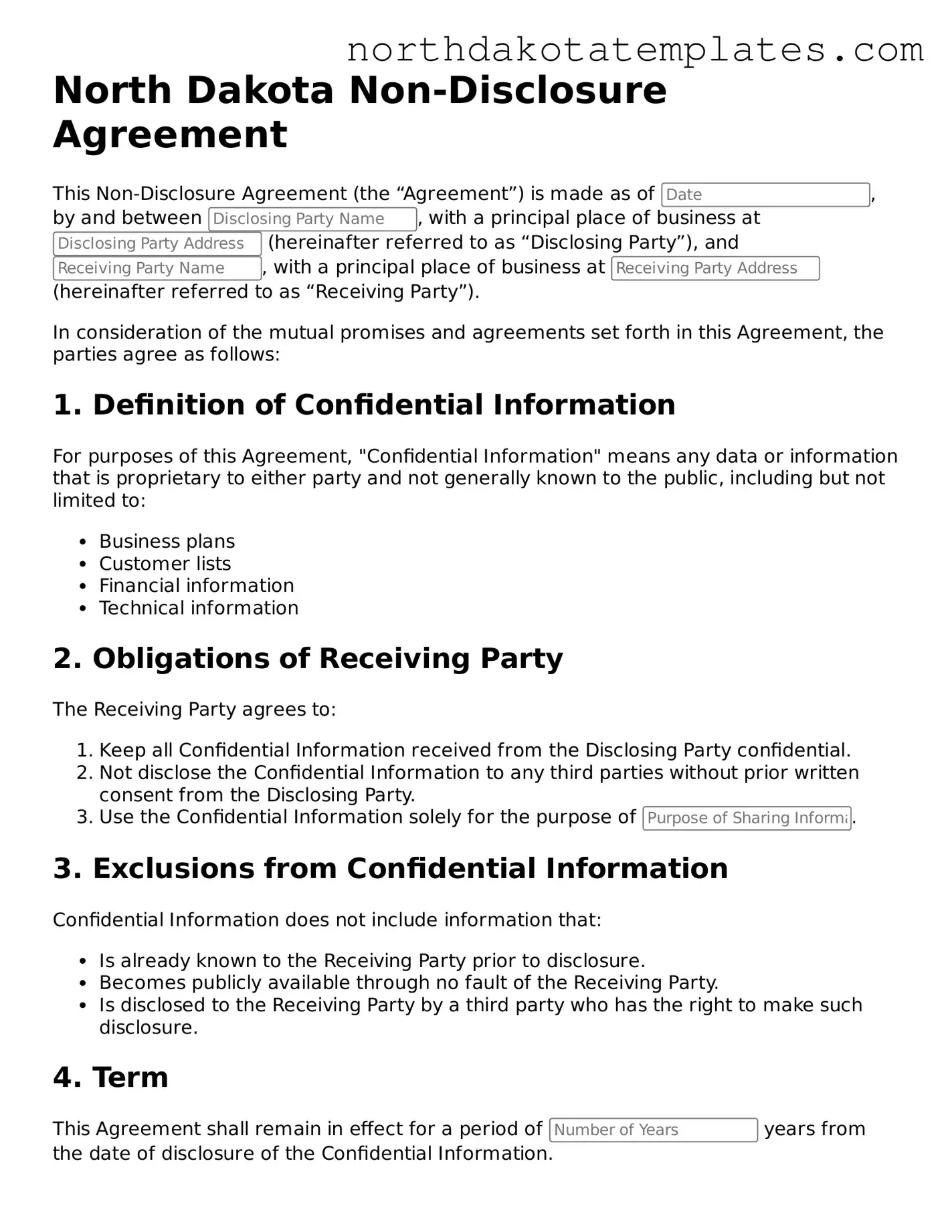What is a Non-disclosure Agreement (NDA) in North Dakota?
A Non-disclosure Agreement (NDA) is a legally binding contract that establishes a confidential relationship between parties. In North Dakota, it is commonly used to protect sensitive information from being disclosed to unauthorized individuals or entities. This agreement is essential for businesses and individuals who wish to share proprietary information while safeguarding their interests.
Who can use a Non-disclosure Agreement in North Dakota?
Any individual or business can use an NDA in North Dakota. This includes startups, established companies, and independent contractors. Whether you are sharing trade secrets, business strategies, or other confidential information, an NDA can help ensure that your information remains protected.
What types of information can be protected by an NDA?
An NDA can protect various types of information, including but not limited to trade secrets, business plans, financial data, customer lists, and proprietary technology. The agreement should clearly define what constitutes confidential information to avoid ambiguity.
How long does the confidentiality obligation last?
The duration of the confidentiality obligation can vary based on the terms set in the NDA. Typically, the obligation lasts for a specified period, which can range from a few years to indefinitely, depending on the nature of the information and the agreement between the parties involved.
What happens if someone breaches the NDA?
If a party breaches the NDA, the other party may seek legal remedies. This can include monetary damages, injunctive relief, or specific performance, depending on the severity of the breach and the terms outlined in the agreement. Legal action may be necessary to enforce the NDA and protect the disclosing party's interests.
Do I need a lawyer to draft a Non-disclosure Agreement?
While it is not legally required to have a lawyer draft an NDA, it is advisable. A legal professional can ensure that the agreement is comprehensive, tailored to your specific needs, and compliant with North Dakota laws. This can help prevent potential issues in the future.
Can an NDA be modified after it is signed?
Yes, an NDA can be modified after it is signed, but both parties must agree to the changes. Any amendments should be documented in writing and signed by both parties to ensure enforceability. Clear communication is key to maintaining a good relationship while protecting confidential information.
Is an NDA enforceable in North Dakota?
Yes, an NDA is enforceable in North Dakota as long as it meets certain legal requirements. The agreement must be clear, reasonable in scope, and not violate public policy. Courts will generally uphold NDAs that are well-drafted and serve a legitimate business purpose.
Where can I find a template for a Non-disclosure Agreement in North Dakota?
Templates for NDAs can be found through various online legal resources, business websites, or legal document providers. However, it is important to customize any template to fit your specific situation and to consider consulting with a legal professional to ensure compliance with North Dakota laws.
